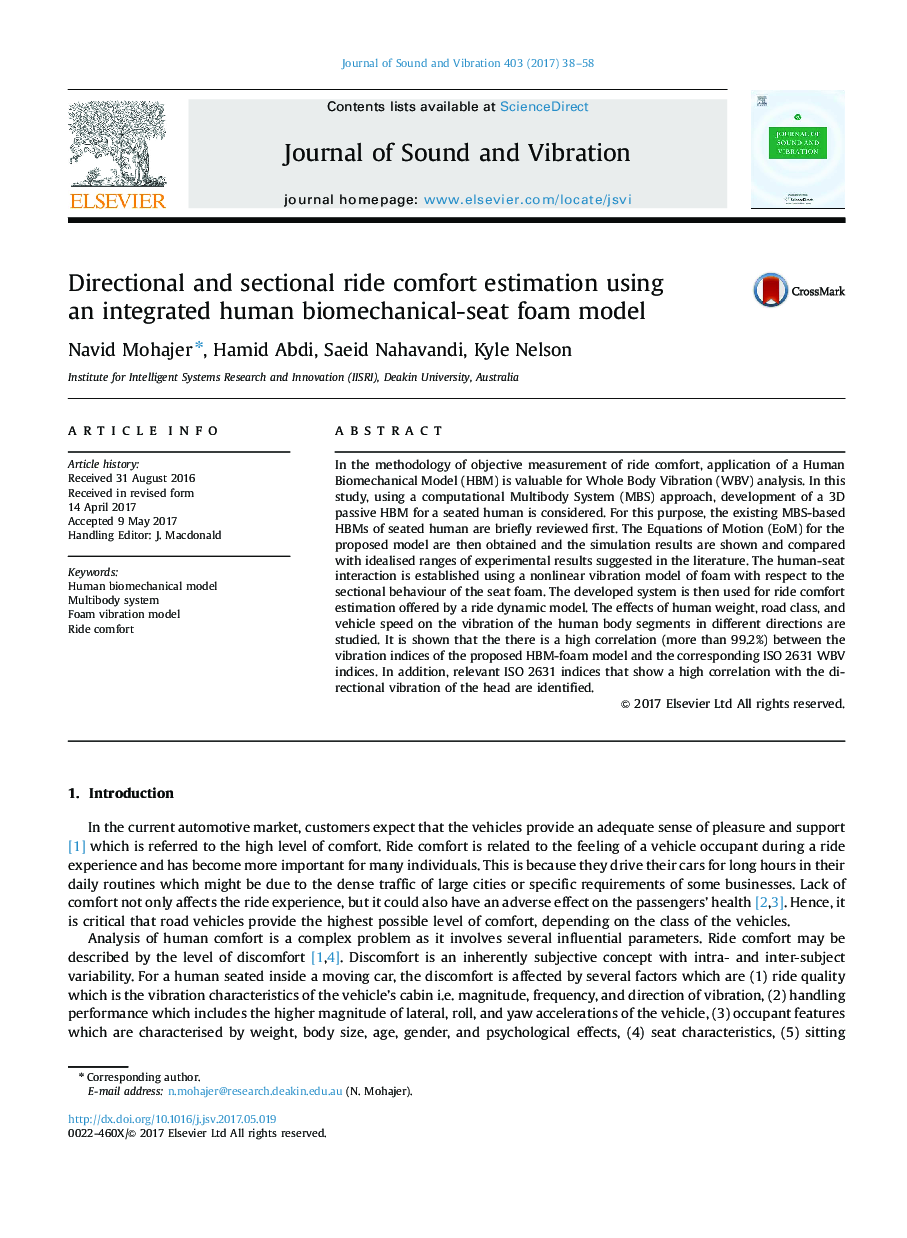| Article ID | Journal | Published Year | Pages | File Type |
|---|---|---|---|---|
| 4924091 | Journal of Sound and Vibration | 2017 | 21 Pages |
Abstract
In the methodology of objective measurement of ride comfort, application of a Human Biomechanical Model (HBM) is valuable for Whole Body Vibration (WBV) analysis. In this study, using a computational Multibody System (MBS) approach, development of a 3D passive HBM for a seated human is considered. For this purpose, the existing MBS-based HBMs of seated human are briefly reviewed first. The Equations of Motion (EoM) for the proposed model are then obtained and the simulation results are shown and compared with idealised ranges of experimental results suggested in the literature. The human-seat interaction is established using a nonlinear vibration model of foam with respect to the sectional behaviour of the seat foam. The developed system is then used for ride comfort estimation offered by a ride dynamic model. The effects of human weight, road class, and vehicle speed on the vibration of the human body segments in different directions are studied. It is shown that the there is a high correlation (more than 99.2%) between the vibration indices of the proposed HBM-foam model and the corresponding ISO 2631 WBV indices. In addition, relevant ISO 2631 indices that show a high correlation with the directional vibration of the head are identified.
Keywords
Related Topics
Physical Sciences and Engineering
Engineering
Civil and Structural Engineering
Authors
Navid Mohajer, Hamid Abdi, Saeid Nahavandi, Kyle Nelson,
